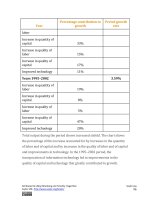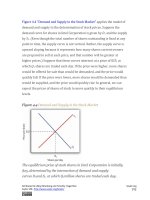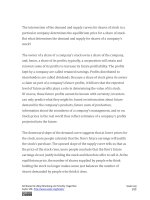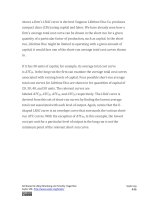Authors libby rittenberg 744
Bạn đang xem bản rút gọn của tài liệu. Xem và tải ngay bản đầy đủ của tài liệu tại đây (401.12 KB, 1 trang )
In a competitive system, a player should receive a wage equal to his or
her MRP—the increase in team revenues the player is able to produce. As
New York Yankees owner George Steinbrenner once put it, “You measure
the value of a ballplayer by how many fannies he puts in the seats.”
The monopsony model, however, predicts that players facing monopsony
employers will receive wages that are less than their MRPs. A test of
monopsony theory, then, would be to determine whether players in
competitive markets receive wages equal to their MRPs and whether
players in monopsony markets receive less.
Since the late 1970s, there has been a major shift in the rules that govern
relations between professional athletes and owners of sports teams. The
shift has turned the once monopsonistic market for professional athletes
into a competitive one. Before 1977, for example, professional baseball
players in the United States played under the terms of the “reserve clause,”
which specified that a player was “owned” by his team. Once a team had
acquired a player’s contract, the team could sell, trade, retain, or dismiss
the player. Unless the team dismissed him, the player was unable to offer
his services for competitive bidding by other teams. Moreover, players
entered major league baseball through a draft that was structured so that
only one team had the right to bid for any one player. Throughout a
player’s career, then, there was always only one team that could bid on
him—each player faced a monopsony purchaser for his services to major
league baseball.
Conditions were similar in other professional sports. Many studies have
shown that the salaries of professional athletes in various team sports fell
far short of their MRPs while monopsony prevailed.
When the reserve clauses were abandoned, players’ salaries shot up—just
as economic theory predicts. Because players could offer their services to
other teams, owners began to bid for their services. Profit-maximizing
Attributed to Libby Rittenberg and Timothy Tregarthen
Saylor URL: />
Saylor.org
744









